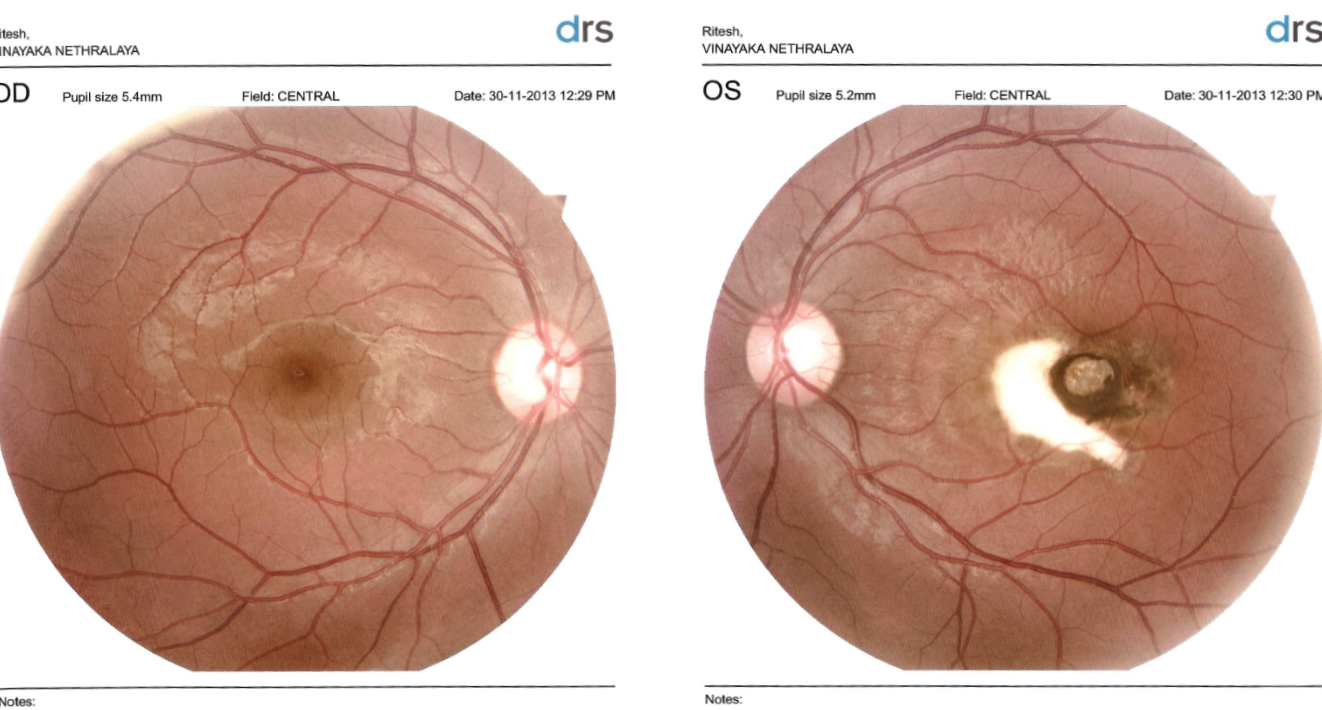On Accessibility
01 Aug 2024Back in ‘09, I wrote a paper examining the impacts of standardization in the technology industry. Prof Parthasarathy’s readings covered diverse topics, including the network wars of the late 1960s, how the Minitel system initially advanced but later hindered France’s technological progress, and how Top-Level Domains (TLDs) were being managed as digital territories. These examples illustrated how standards could act as a counter-balancing force to the disruptive & exclusionary nature of technological progress.
When it came time to write a paper, I picked Accessibility standards. It’s a topic that’s close to my heart, and something I’ve been thinking about a lot lately given the AI boom in the last couple of years.
Personal connection
Due to an unfortunate accident in school, I was struck by Macular Toxoplasmosis which caused a permanent scar on my retina. While I have manageable vision with both eyes, since the area near my Macular Lutea or Fovea is affected, I have poor vision with just my left eye alone. Medical professionals assured me that I was fortunate, as the condition could have been more severe. However, this diagnosis significantly limited my perceived options, particularly in terms of future career paths. I recall, at age 15, being advised by doctors to avoid careers involving extensive screen use, given the proliferation of computers and digital technology.
 |
|---|
| Retina scans from 2013 |
I remember feeling elated using Win98’s accessibility features. It was the first time I realized I had a future with devices beyond my vision. Text-to-speech seemed like magic, and I remember using ALT text on browsers and how they interfaced with the user.
There was another inspiration. Prateeksha’s maternal uncle, Dr Umashankar, a surgeon in the UK who became quadriplegic after being mowed down by a drunk driver. Despite the accident and the challenges, he continued to live a life filled with positivity, and even had a custom computer setup which he operated with his wrists. He traded stocks for a living, and was a big champion of the internet and other communication technologies. I was also fortunate to work with experts in assistive technology like Dr T.V. Raman, and with friends like Sumit who have championed the cause over the last two decades.
The State of Accessibility
Architecture was the first profession to push for inclusivity in their designs. Curb cuts are the famous example, eventually becoming a standard across the US and its territories. However, it’s not the engineering innovation alone. The ubiquity of curb-cuts is thanks to regulation, mandates, and enforcement.
Technology had no such mandates or regulation. In the 2000s, researchers warned of a widening digital divide for people with access to technology and those without. The evidence was there for all to see. Many spoke of a future where there was universal access to information and where everyone was connected. We’re now living in such a world with over 4 billion active devices in the world, and over half of humanity can get access to online information.
Nothing has changed since I wrote the paper. The ecosystem remains as splintered and divided as it was 15 years later. To get specific, here’s a list of screen readers that are platform specific and don’t interoperate with the other technologies.
Windows - Screen Readers
- JAWS (Job Access With Speech)
- NVDA (NonVisual Desktop Access)
- Microsoft Narrator
Browsers
- JAWS (for Chrome, Firefox, Edge)
MacOS & iOS
- VoiceOver
Android
- Talkback (Google’s screen reader)
Anyone who has used a screen reader knows exactly how broken each of these are, and how difficult it is to build for it. Most modern apps don’t support users with special needs, they expect the OS to manage the complexity. Why? it just does not make business sense.
When profit is key, invisible customers like the differently able are often ignored and sidelined. And while, this illusion of choice might seem like a great thing. In reality, it’s a broken ecosystem where the onus is on the developer or corporation to go out of their way to ensure their tech/service is accessible. There’s a larger critique here about how products are built these days. MVP first and finesse later policies have been disastrous as a policy for accessibility.
Accessibility in the age of AI
The AI age is exciting. We have code-generators, image-generators, Image-to-text generators and so much more. Most dev teams end up ignoring accessibility features due to lack of bandwidth and resources. AI can help bridge this gap.
- Imagine building an app or service, and letting an AI code generator/validator markup all the information into ARIA grids or tables to make it easy for screen-readers to parse.
- Imagine an AI that can generate alt-text for images, or even better, describe the image in a way that’s more meaningful to the user.
All these are doable today. It’s not a technical challenge anymore; it’s a problem of priorities. I’m eager to find out who will take the lead.